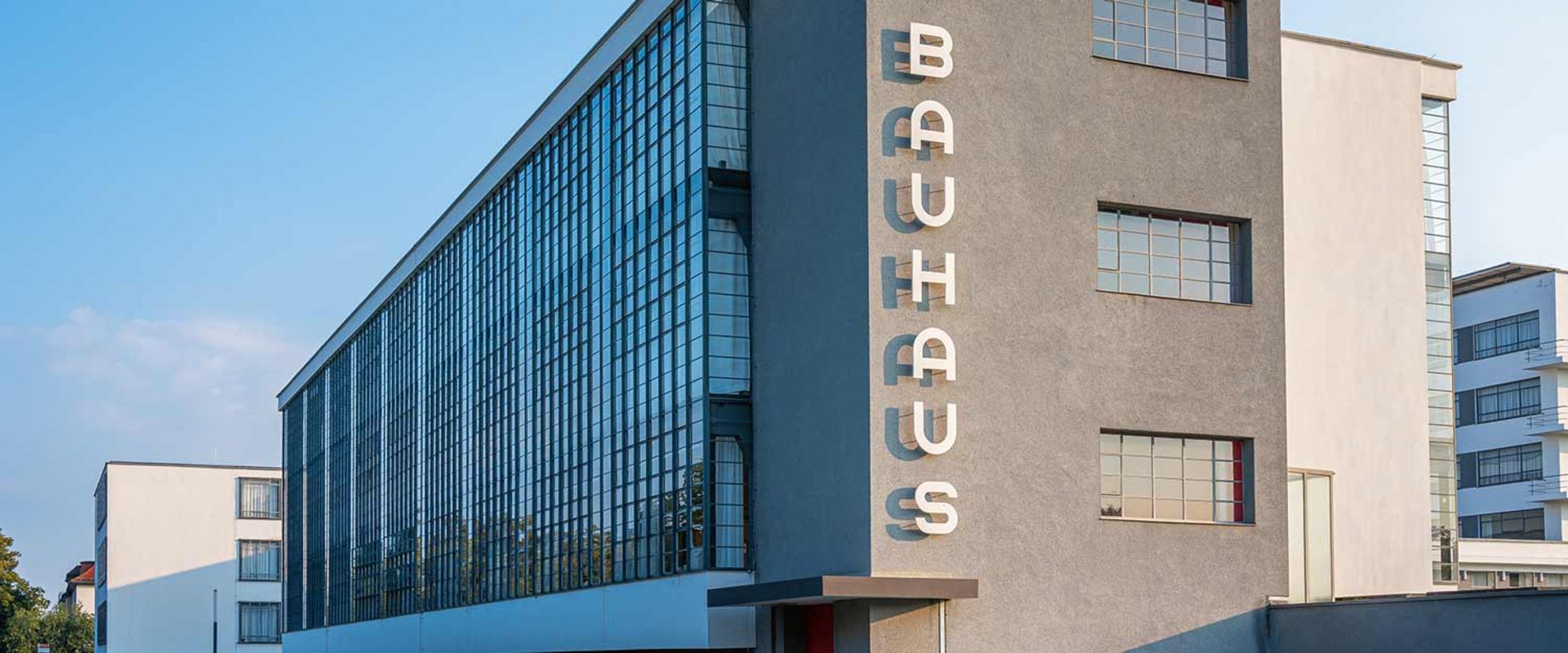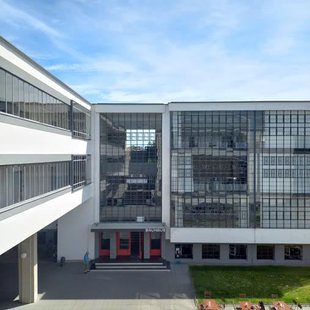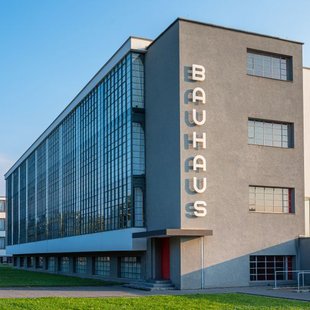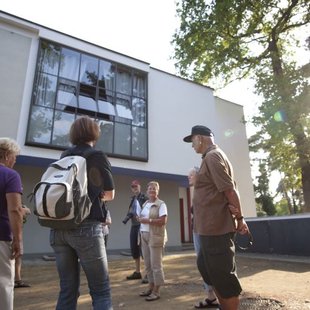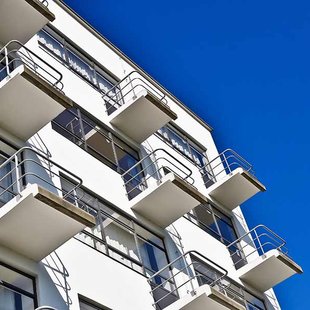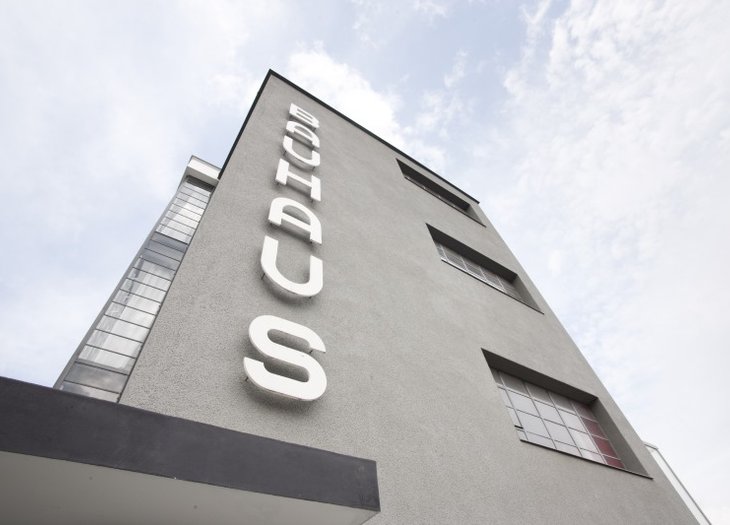
The Bauhaus
In 1925/26, the Bauhaus, the College of Design, was established in Dessau, about 35 kilometers from Wittenberg. The main building of the college was designed by Walter Gropius and is today considered a pioneer of modern architecture. The city's other Bauhaus buildings are also considered seminal for 20th-century architecture. Not least because of this, the Bauhaus buildings in Dessau and Weimar were named UNESCO World Heritage Sites in 1996. Probably the most famous building is the actual Bauhaus, the seat of the former School of Design. Walter Gropius' design included some groundbreaking innovations in building conception. Gropius consistently separated the individual parts of the Bauhaus building according to function and designed them accordingly.
The Bauhaus building can still be visited today. Two daily public guided tours bring you closer to the spirit of the Bauhaus. In addition to the permanent exhibition "Workshop of Modernity" in Gropius' Bauhaus building, the Bauhaus Dessau Foundation, founded in 1994, organizes regular special exhibitions, the annual Bauhaus Festival, concerts on the Bauhaus stage and much more.
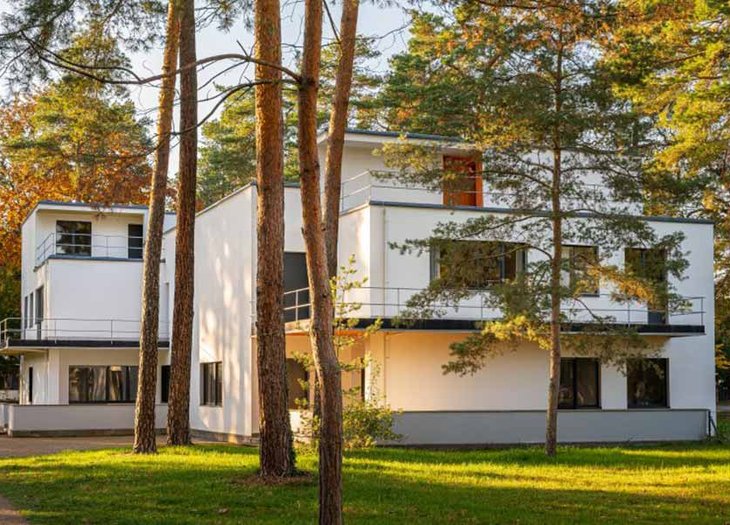
The master houses
Also world-famous are the Masters' Houses, the residential buildings of the "masters" teaching at the university. The houses in this estate are considered a prime example of white modernism and were intended to demonstrate a new way of living. As in the Bauhaus building itself, the individual parts of the Masters' Houses were designed according to their function. For example, Gropius equipped the studios with large, floor-to-ceiling windows to allow inspiration to flow and create an impression of freedom.
Due to the influence of the National Socialists and bomb destruction during World War II, the Masters' Houses lost the appearance typical of the Bauhaus style. The houses that still exist were restored to their original condition in the 1990s. The window fronts as well as the interior color scheme adapted to the residents were restored in the process. Then, in 2014, the new master houses were opened, built on the site of the houses that no longer exist. With bare walls and, in part, barely translucent windows, they bear witness to the destruction and emptiness left by the real houses.
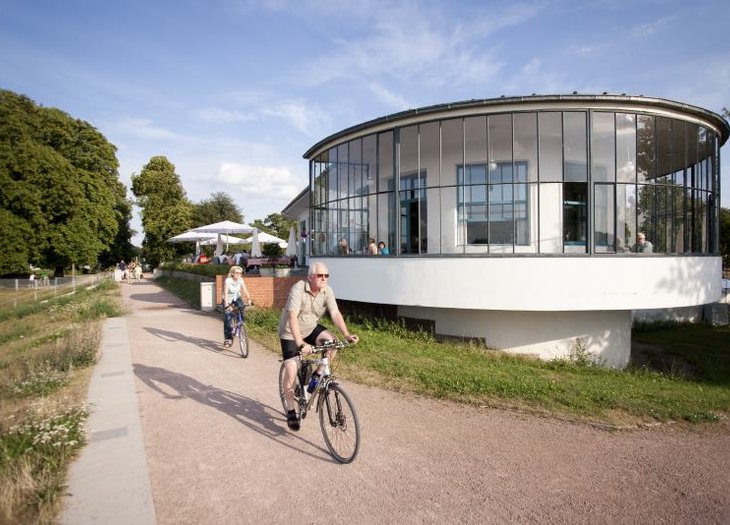
Other Bauhaus buildings in Dessau
The Bauhaus buildings are spread throughout the city and also include the Dessau-Törten estate, the Kornhaus, the Stahlhaus and the historic employment office. The Dessau-Törten estate was built by the Bauhaus on a mission to design affordable mass housing. A total of 314 residential houses were built. Some houses of the settlement have been faithfully restored and can be visited. The arcade houses are also part of the Bauhaus housing estate.
Open map
We would like to point out that when you activate the map, data is transmitted to the provider Google.
Bauhaus
March – October
Monday – Sunday: 10.00 am – 05.00 pm
November – February
Tuesday – Sunday: 10.00 am – 05.00 pm
Bauhaus-Museum
March – October
Tuesday – Sunday: 10.00 am – 06.00 pm
November – February
Tuesday – Sunday: 10.00 am – 05.00 pm
Master Houses
March – October
Monday – Sunday: 10.00 am – 05.00 pm
November – February
Tuesday – Sunday: 10.00 am – 05.00 pm
Public guided tours Bauhaus building: daily 11.00 a.m. and 2.00 p.m.
Public guided tours of the Bauhaus Museum: Wednesday & Saturday at 13.00 hrs.
Public guided tours of the Masters' Houses (German): daily 12.30 p.m. and 3.30 p.m.
Public guided tours Meisterhäuser (English): Friday 1.30 p.m.
One-way ticket: 9,00 € / 6,00 € reduced (valid for admission to one of the Bauhaus buildings)
With the World HeritageCard you get free admission to the Bauhaus, the Masters' Houses and the Bauhaus Museum. More information.
The World Heritage Bus Line 304 connects the UNESCO World Heritage Sites Lutherstadt Wittenberg, Wörlitz and Dessau-Roßlau.
Download bus schedule of line 304
Status of the timetable information 11.12.2022. Subject to change.

